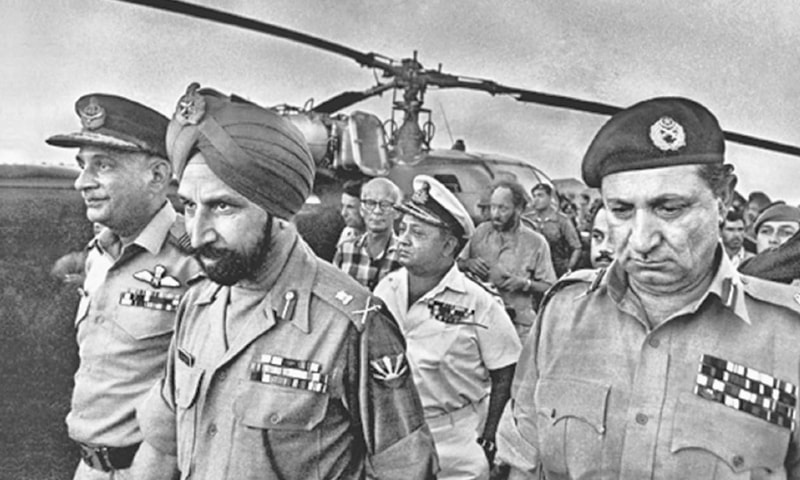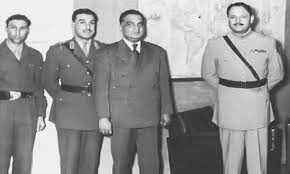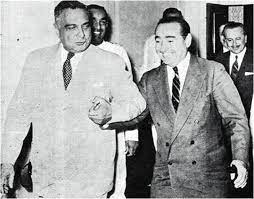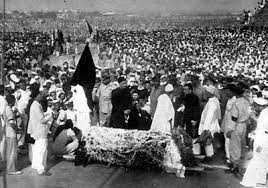As part of Operation Chengiz Khan, Pakistan launched aerial attacks on a number of Indian airfields on December 3, 1971. These airfields included those in Amritsar, Pathankot, Jodhpur, Ambala, Agra, and Srinagar. Indira Gandhi, the Prime Minister of India, quickly addressed the nation and declared the beginning of the war between India and Pakistan. This event marked the beginning of the India-Pakistan War, which went on until 1971. It was ultimately this conflict that resulted in the establishment of Bangladesh.
Contextualization of the Past
Allow me to take you back in time to the pre-colonial era before we delve into the complexities of the war. On the Indian subcontinent, there were a great number of independent kingdoms, each of which had its own language, traditions, and rulers. Since the 13th century, the Bengal region, which includes the areas that are now Bangladesh and West Bengal as well as the neighbouring regions, had been ruled by Muslim monarchs for a considerable amount of time.
Colonialism played a role.
In 1757, the East India Company established its dominance, which marked the beginning of British rule. This rule lasted until 1947, when the subcontinent was divided into India and Pakistan as a result of the traumatic partition. Religious tensions and geopolitical shifts were the driving forces behind the partition, which resulted in large-scale migrations and profound disruptions to all aspects of society and culture.
Origin of Pakistan as a nation
Pakistan was established in 1947, marking the beginning of the process of dividing the country along religious lines. This was the culmination of the demand for a separate state for Muslims. There were, however, differences that emerged within Pakistan, particularly between West Pakistan and East Pakistan (which is now known as Bangladesh).
Unrest in the political sphere and the imposition of Urdu
Political instability, economic disparities, and cultural differences all contributed to the widening of the rift between the two Pakistans after the formation of Pakistan. The Bengali Language Movement and protests started as a result of the government of West Pakistan’s decision to make Urdu the official language. This decision exacerbated the tensions that were already present.
Bangladeshi nationalism is on the rise.
Bengali nationalism and demands for autonomy were sparked as a result of the refusal to recognise Bengali as an official language and the subsequent suppression of protests. Sheikh Mujibur Rahman and the Awami League were particularly influential in this regard.
Conspiracy Case and Unrest in the Agartala Region
In the Agartala Conspiracy Case, Rahman and his associates were falsely accused of conspiring with India for East Pakistan’s independence. This further stoked public outrage and led to widespread demonstrations against the governance of West Pakistan.
The Elections of 1970 and the Political Consequences
The Awami League was able to win the vast majority of seats in East Pakistan during the 1970 elections, but it was unsuccessful in gaining any seats in West Pakistan. As a result of the subsequent annulment of election results by the authorities in West Pakistan, widespread unrest and demands for autonomy spread throughout the region.
Beginning of the Struggle for Independence
The declaration of independence by Sheikh Mujibur Rahman on March 7, 1971, and the subsequent crackdowns by the Pakistani army marked the beginning of Bangladesh’s quest for liberation. This occurred in the midst of mounting tension and protests.
escalation to the point of war
The culmination of Pakistan’s military crackdown and atrocities committed against Bengalis was Operation Searchlight, which resulted in widespread genocide among Bengalis. After seeing the influx of refugees and the atrocities that were taking place, India decided to get involved in the conflict in order to support Bangladesh’s fight for independence.
Conflict between India and Pakistan and the Liberation of Bangladesh
During the course of India’s military intervention, Pakistan’s request for a cease-fire was rejected, which ultimately resulted in India and Bangladesh achieving a decisive military victory. In 1971, on December 16th, the momentous surrender of Pakistani forces marked the beginning of the independence of Bangladesh.
Aftermath and the Development of
The recognition of Bangladesh as an independent nation was formally established through the Simla Agreement. In the years following the war, Bangladesh was confronted with its own set of difficulties, including a struggle for stability, military coups, and changes in the government.
Both Reflections and a Legacy
At the same time that it highlights the dangers of linguistic imposition, cultural differences, and the consequences of political marginalisation, the history of Bangladesh’s creation sheds light on these issues. The significance of inclusive governance and the complexities of cultural diversity within nations are both brought up for consideration as a result of this.
The birth of Bangladesh in 1971 was a pivotal moment in history, one that was marked by the perseverance of a nation, the sacrifices that were made, and the struggles that were endured. An examination of this narrative compels us to contemplate the complexities of nation-building, the importance of cultural harmony, and the enduring legacy of decisions made throughout history.

 Cart is empty
Cart is empty 







